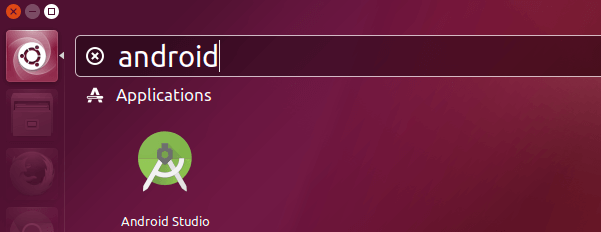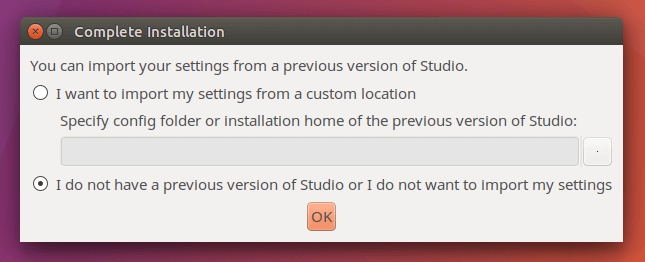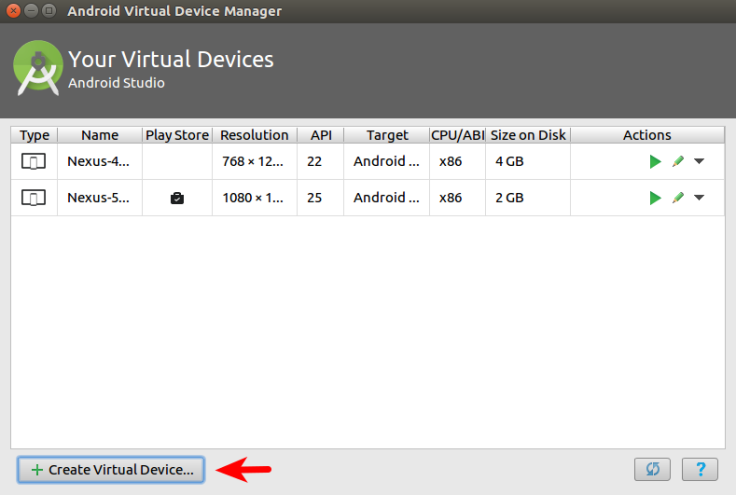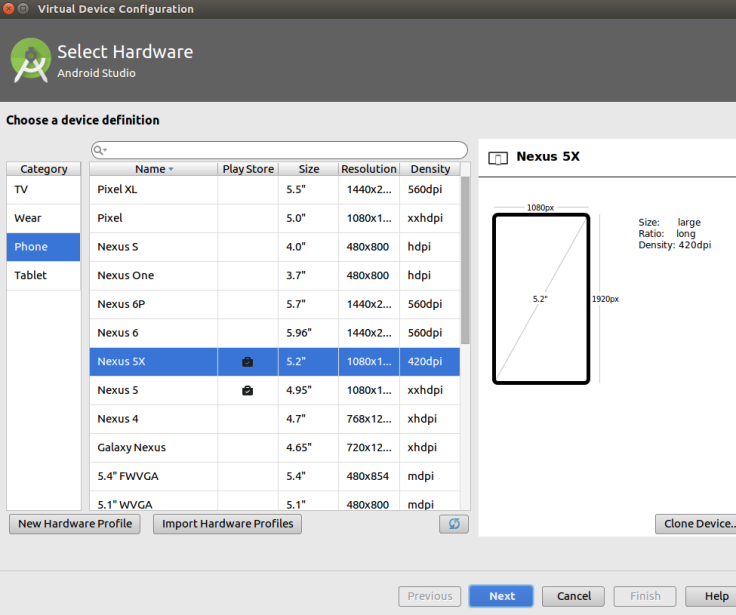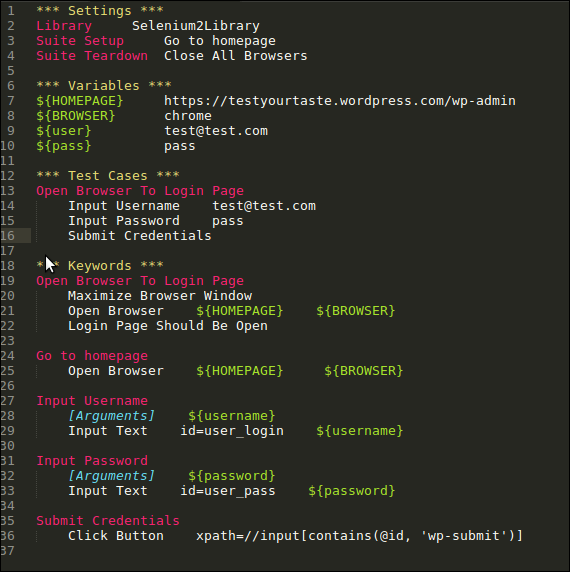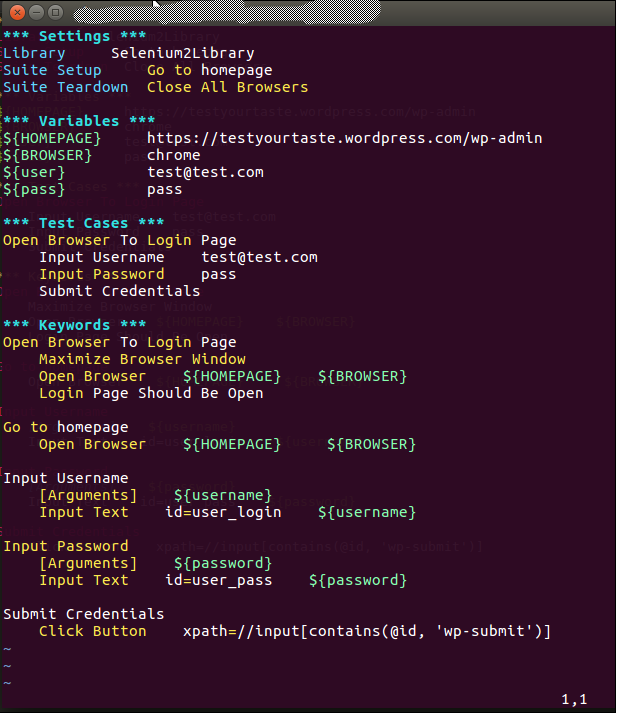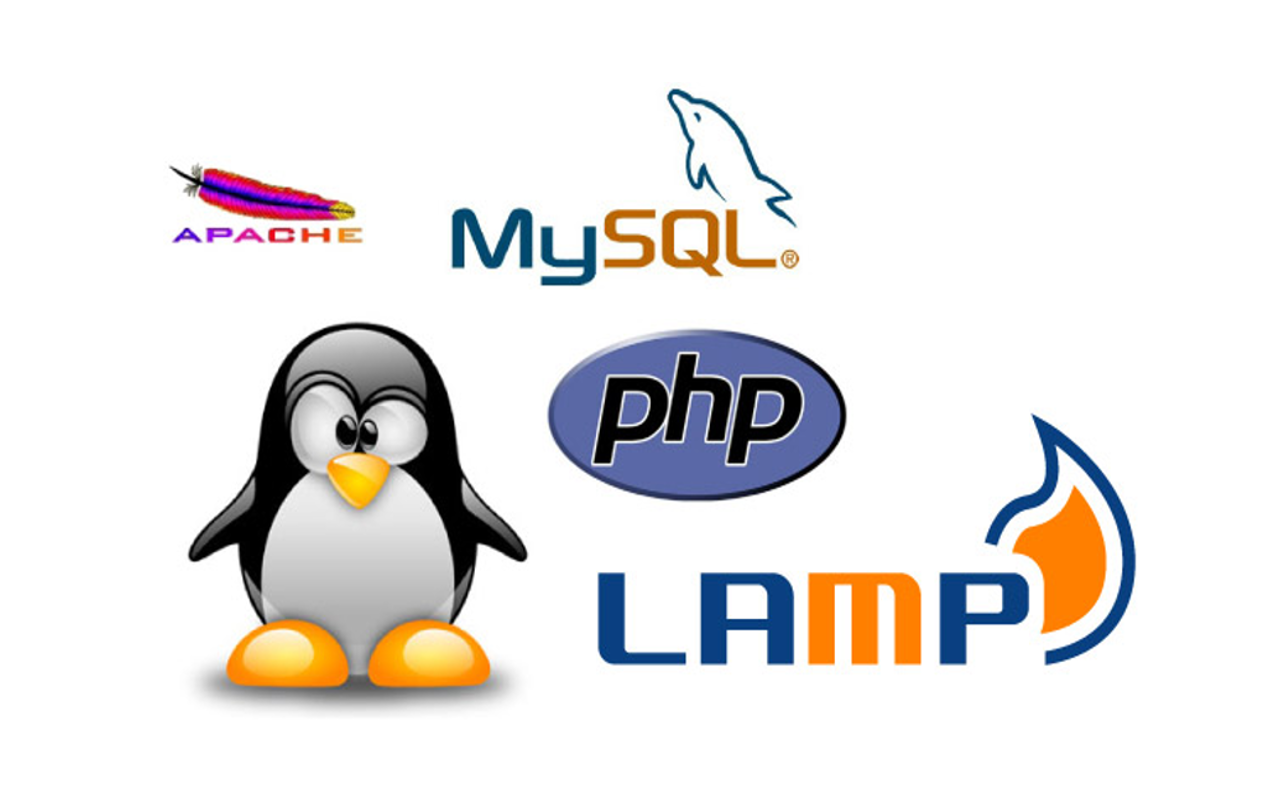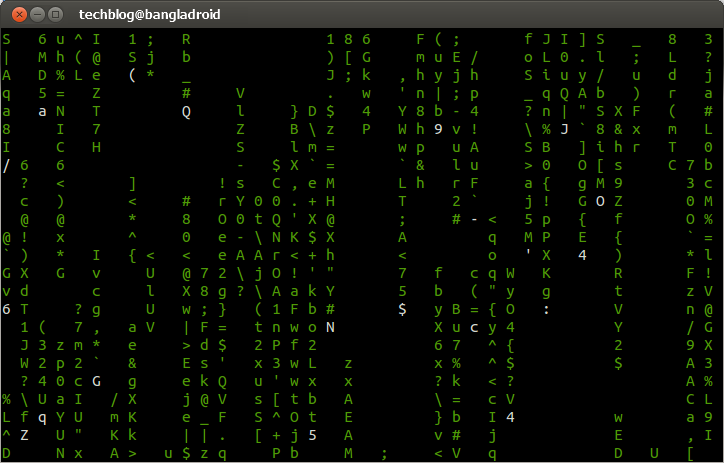Prerequisites
To follow this tutorial, you will need the following:
- 64-bit Ubuntu 16.04 server
- Non-root user with sudo privileges
Note: Docker requires a 64-bit version of Ubuntu as well as a kernel version equal to or greater than 3.10. The default 64-bit Ubuntu 16.04 server meets these requirements.
All the commands in this tutorial should be run as a non-root user. If root access is required for the command, it will be preceded by sudo.
Step 1 — Installing Docker
The Docker installation package available in the official Ubuntu 16.04 repository may not be the latest version. To get the latest and greatest version, install Docker from the official Docker repository. This section shows you how to do just that.
First, add the GPG key for the official Docker repository to the system:
Add the Docker repository to APT sources:
Next, update the package database with the Docker packages from the newly added repo:
Make sure you are about to install from the Docker repo instead of the default Ubuntu 16.04 repo:
You should see output similar to the follow:
Output of apt-cache policy docker-ce
docker-ce:
Installed: (none)
Candidate: 17.03.1~ce-0~ubuntu-xenial
Version table:
17.03.1~ce-0~ubuntu-xenial 500
500 https://download.docker.com/linux/ubuntu xenial/stable amd64 Packages
17.03.0~ce-0~ubuntu-xenial 500
500 https://download.docker.com/linux/ubuntu xenial/stable amd64 Packages
Notice that docker-ce is not installed, but the candidate for installation is from the Docker repository for Ubuntu 16.04. The docker-ce version number might be different.
Finally, install Docker:
Docker should now be installed, the daemon started, and the process enabled to start on boot. Check that it’s running:
The output should be similar to the following, showing that the service is active and running:
Output:
● docker.service - Docker Application Container Engine
Loaded: loaded (/lib/systemd/system/docker.service; enabled; vendor preset: enabled)
Active: active (running) since Sun 2016-05-01 06:53:52 CDT; 1 weeks 3 days ago
Docs: https://docs.docker.com
Main PID: 749 (docker)
Installing Docker now gives you not just the Docker service (daemon) but also the docker command line utility, or the Docker client. We’ll explore how to use the docker command later in this tutorial.
Step 2 — Executing the Docker Command Without Sudo (Optional)
By default, running the docker command requires root privileges — that is, you have to prefix the command with sudo. It can also be run by a user in the docker group, which is automatically created during the installation of Docker. If you attempt to run the docker command without prefixing it with sudo or without being in the docker group, you’ll get an output like this:
Output:
docker: Cannot connect to the Docker daemon. Is the docker daemon running on this host?.
See 'docker run --help'.
If you want to avoid typing sudo whenever you run the docker command, add your username to the docker group:
To apply the new group membership, you can log out of the server and back in, or you can type the following:
You will be prompted to enter your user’s password to continue. Afterwards, you can confirm that your user is now added to the docker group by typing:
Output:
sammy sudo docker
If you need to add a user to the docker group that you’re not logged in as, declare that username explicitly using:
The rest of this article assumes you are running the docker command as a user in the docker user group. If you choose not to, please prepend the commands with sudo.
Step 3 — Using the Docker Command
With Docker installed and working, now’s the time to become familiar with the command line utility. Using docker consists of passing it a chain of options and commands followed by arguments. The syntax takes this form:
To view all available subcommands, type:
As of Docker 1.11.1, the complete list of available subcommands includes:
Output:
attach Attach to a running container
build Build an image from a Dockerfile
commit Create a new image from a container's changes
cp Copy files/folders between a container and the local filesystem
create Create a new container
diff Inspect changes on a container's filesystem
events Get real time events from the server
exec Run a command in a running container
export Export a container's filesystem as a tar archive
history Show the history of an image
images List images
import Import the contents from a tarball to create a filesystem image
info Display system-wide information
inspect Return low-level information on a container or image
kill Kill a running container
load Load an image from a tar archive or STDIN
login Log in to a Docker registry
logout Log out from a Docker registry
logs Fetch the logs of a container
network Manage Docker networks
pause Pause all processes within a container
port List port mappings or a specific mapping for the CONTAINER
ps List containers
pull Pull an image or a repository from a registry
push Push an image or a repository to a registry
rename Rename a container
restart Restart a container
rm Remove one or more containers
rmi Remove one or more images
run Run a command in a new container
save Save one or more images to a tar archive
search Search the Docker Hub for images
start Start one or more stopped containers
stats Display a live stream of container(s) resource usage statistics
stop Stop a running container
tag Tag an image into a repository
top Display the running processes of a container
unpause Unpause all processes within a container
update Update configuration of one or more containers
version Show the Docker version information
volume Manage Docker volumes
wait Block until a container stops, then print its exit code
To view the switches available to a specific command, type:
To view system-wide information about Docker, use:
Step 4 — Working with Docker Images
Docker containers are run from Docker images. By default, it pulls these images from Docker Hub, a Docker registry managed by Docker, the company behind the Docker project. Anybody can build and host their Docker images on Docker Hub, so most applications and Linux distributions you’ll need to run Docker containers have images that are hosted on Docker Hub.
To check whether you can access and download images from Docker Hub, type:
The output, which should include the following, should indicate that Docker in working correctly:
Output:
Hello from Docker.
This message shows that your installation appears to be working correctly.
...
You can search for images available on Docker Hub by using the docker command with the searchsubcommand. For example, to search for the Ubuntu image, type:
The script will crawl Docker Hub and return a listing of all images whose name match the search string. In this case, the output will be similar to this:
Output:
NAME DESCRIPTION STARS OFFICIAL AUTOMATED
ubuntu Ubuntu is a Debian-based Linux operating s... 3808 [OK]
ubuntu-upstart Upstart is an event-based replacement for ... 61 [OK]
torusware/speedus-ubuntu Always updated official Ubuntu docker imag... 25 [OK]
rastasheep/ubuntu-sshd Dockerized SSH service, built on top of of... 24 [OK]
ubuntu-debootstrap debootstrap --variant=minbase --components... 23 [OK]
nickistre/ubuntu-lamp LAMP server on Ubuntu 6 [OK]
nickistre/ubuntu-lamp-wordpress LAMP on Ubuntu with wp-cli installed 5 [OK]
nuagebec/ubuntu Simple always updated Ubuntu docker images... 4 [OK]
nimmis/ubuntu This is a docker images different LTS vers... 4 [OK]
maxexcloo/ubuntu Docker base image built on Ubuntu with Sup... 2 [OK]
admiringworm/ubuntu Base ubuntu images based on the official u... 1 [OK]
…
In the OFFICIAL column, OK indicates an image built and supported by the company behind the project. Once you’ve identified the image that you would like to use, you can download it to your computer using the pull subcommand, like so:
After an image has been downloaded, you may then run a container using the downloaded image with the run subcommand. If an image has not been downloaded when docker is executed with the runsubcommand, the Docker client will first download the image, then run a container using it:
To see the images that have been downloaded to your computer, type:
The output should look similar to the following:
Output:
REPOSITORY TAG IMAGE ID CREATED SIZE
ubuntu latest c5f1cf30c96b 7 days ago 120.8 MB
hello-world latest 94df4f0ce8a4 2 weeks ago 967 B
As you’ll see later in this tutorial, images that you use to run containers can be modified and used to generate new images, which may then be uploaded (pushed is the technical term) to Docker Hub or other Docker registries.
Step 5 — Running a Docker Container
The hello-world container you ran in the previous is an example of a container that runs and exits, after emitting a test message. Containers, however, can be much more useful than that, and they can be interactive. After all, they are similar to virtual machines, only more resource-friendly.
As an example, let’s run a container using the latest image of Ubuntu. The combination of the -i and -tswitches gives you interactive shell access into the container:
Your command prompt should change to reflect the fact that you’re now working inside the container and should take this form:
Output:
root@d9b100f2f636:/#
Important: Note the container id in the command prompt. In the above example, it is d9b100f2f636.
Now you may run any command inside the container. For example, let’s update the package database inside the container. No need to prefix any command with sudo, because you’re operating inside the container with root privileges:
Then install any application in it. Let’s install NodeJS, for example.
Step 6 — Listing Docker Containers
After using Docker for a while, you’ll have many active (running) and inactive containers on your computer. To view the active ones, use:
You will see output similar to the following:
Output:
CONTAINER ID IMAGE COMMAND CREATED STATUS PORTS NAMES
f7c79cc556dd ubuntu "/bin/bash" 3 hours ago Up 3 hours silly_spence
To view all containers — active and inactive, pass it the -a switch:
To view the latest container you created, pass it the -l switch:
Stopping a running or active container is as simple as typing:
The container-id can be found in the output from the docker ps command.
Step 7 — Committing Changes in a Container to a Docker Image
When you start up a Docker image, you can create, modify, and delete files just like you can with a virtual machine. The changes that you make will only apply to that container. You can start and stop it, but once you destroy it with the docker rm command, the changes will be lost for good.
This section shows you how to save the state of a container as a new Docker image.
After installing nodejs inside the Ubuntu container, you now have a container running off an image, but the container is different from the image you used to create it.
To save the state of the container as a new image, first exit from it:
Then commit the changes to a new Docker image instance using the following command.
Note: If you run an image and made some modification and now want to save the modified image locally then follow the below steps:
- use docker ps -a command to see the container listing and copy the container id.
- now, use:
docker commit <container-id> <new-image-name>
It will save the modified modified image as the <new-image-name>. You can see the new modified image using the docker images command.
The -m switch is for the commit message that helps you and others know what changes you made, while -a is used to specify the author. The container ID is the one you noted earlier in the tutorial when you started the interactive docker session. Unless you created additional repositories on Docker Hub, the repository is usually your Docker Hub username:
For example:
Note: When you commit an image, the new image is saved locally, that is, on your computer. Later in this tutorial, you’ll learn how to push an image to a Docker registry like Docker Hub so that it may be assessed and used by you and others.
After that operation has completed, listing the Docker images now on your computer should show the new image, as well as the old one that it was derived from:
The output should be similar to this:
Output:
finid/ubuntu-nodejs latest 62359544c9ba 50 seconds ago 206.6 MB
ubuntu latest c5f1cf30c96b 7 days ago 120.8 MB
hello-world latest 94df4f0ce8a4 2 weeks ago 967 B
In the above example, ubuntu-nodejs is the new image, which was derived from the existing ubuntu image from Docker Hub. The size difference reflects the changes that were made. And in this example, the change was that NodeJS was installed. So next time you need to run a container using Ubuntu with NodeJS pre-installed, you can just use the new image. Images may also be built from what’s called a Dockerfile. But that’s a very involved process that’s well outside the scope of this article.
Step 8 — Pushing Docker Images to a Docker Repository
The next logical step after creating a new image from an existing image is to share it with a select few of your friends, the whole world on Docker Hub, or other Docker registry that you have access to. To push an image to Docker Hub or any other Docker registry, you must have an account there.
This section shows you how to push a Docker image to Docker Hub. To learn how to create your own private Docker registry, check out How To Set Up a Private Docker Registry on Ubuntu 14.04.
To create an account on Docker Hub, register at Docker Hub. Afterwards, to push your image, first log into Docker Hub. You’ll be prompted to authenticate:
If you specified the correct password, authentication should succeed. Then you may push your own image using:
It will take sometime to complete, and when completed, the output will similar to the following:
Output:
The push refers to a repository [docker.io/finid/ubuntu-nodejs]
e3fbbfb44187: Pushed
5f70bf18a086: Pushed
a3b5c80a4eba: Pushed
7f18b442972b: Pushed
3ce512daaf78: Pushed
7aae4540b42d: Pushed
...
After pushing an image to a registry, it should be listed on your account’s dashboard,
If a push attempt results in an error of this sort, then you likely did not log in:
Output:
The push refers to a repository [docker.io/finid/ubuntu-nodejs]
e3fbbfb44187: Preparing
5f70bf18a086: Preparing
a3b5c80a4eba: Preparing
7f18b442972b: Preparing
3ce512daaf78: Preparing
7aae4540b42d: Waiting
unauthorized: authentication required
Log in, then repeat the push attempt.
Conclusion
There’s a whole lot more to Docker than has been given in this article, but this should be enough to getting you started working with it on Ubuntu 16.04. Like most open source projects, Docker is built from a fast-developing codebase, so make a habit of visiting the project’s blog page for the latest information.
Please Note: The content of this page is collected from the https://www.digitalocean.com site for my personal reference in future use. Therefore, all the credit and copyrights goes to the mentioned site


